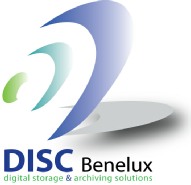

4823 LJ Breda
Nederland
Tel 076-5414360
PoINT Archiver
info@disc-nederland.nl
Qstar Network Migrator
Snel naar >

Copyright 2005 -
PoINT Storage Manager - File Tiering and Archiving
The requirements for storage solutions concerning performance, availability and capacity are continuously growing while simultaneously companies have to face a high cost pressure. By PoINT Storage Manager acquisition and operational costs can be reduced by combining different storage technologies in a tiered storage architecture.
There is no need for companies to extend their cost-intensive primary storage as it is possible by PoINT Storage Manager to optimize their storage resources and to integrate them into a multivendor storage infrastructure with different storage technologies while facing the specific requirements of today’s industry.
The value of data and related information is changing over time resulting in a change of the requirements for corresponding storage hardware. In most cases data can be moved from primary storage to the next tier already after 30 days and can be archived after additional 60 days. The 3-tiered storage architecture reflects optimally the information lifecycle and stores data by the most suitable storage technology. Nearly up to 80% of data is inactive and can be migrated from primary storage to cost-efficient secondary storage.
In an automated file tiering concept an efficient and effective administration of data as well as the use of all available storage capacity can be achieved by individually created policies. Furthermore compliance imposed by company requirements and law can be fulfilled.
Not only backup and recovery times can be decreased by implementing PoINT Storage Manager but it leads also to a lower storage cost by integrated replication and archiving functions. Additional savings can be achieved by a workflow optimization as a result of automated file tiering which finally makes a reduced personnel possible.
By the integrated migration functionality of PoINT Storage Manager obsolete storage systems can be replaced as well as integrated into a new storage environment (storage consolidation) without extra cost. Replacement of obsolete storage systems is quite often very expensive. Consequently storage costs can be reduced by using this migration functionality, in addition avoiding future migration cost at an early stage.
Features:
Automated File Tiering, Long-term Archiving incl. Retention Management
Transparent Migration, File Virtualization
Data Protection & Security
Cloud Storage
Benefits and Advantages
Efficient use of cost-intensive primary storage by off-loading inactive data (Data Migration)
Instant and homogeneous access to all data
Reduced management efforts thanks to automated processes (Automated File Tiering)
Uninterrupted use of applications
Cost and time saving by reduced backup data volumes
Fulfillment of compliance demands
No additional software required for integration of tape and optical

PoINT Tiered Storage en archiving solutions
PoINT Storage manager Archive edition
PoINT Storage manager Migration edition
Download datasheets (klik op de links hieronder )

